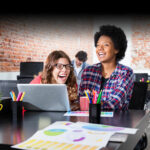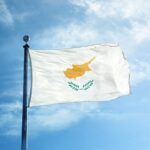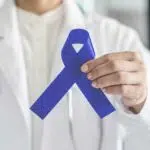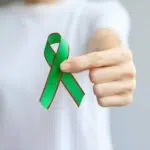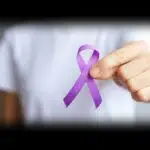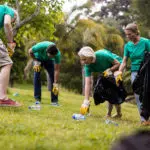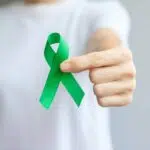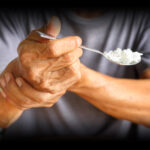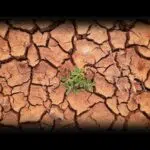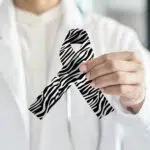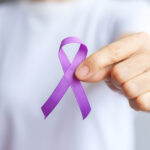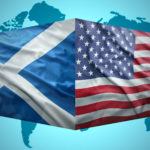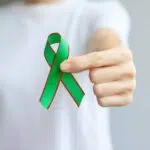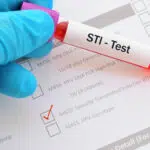Rosacea Awareness Month takes place in April every year. Rosacea is a chronic skin disorder that can result in sensitivity, flushing, redness, broken capillaries, and breakouts. This illness is sometimes misdiagnosed as allergies or acne. Rosacea Awareness Month was declared by the National Rosacea Society (N.R.S.) in April 1992 to raise public awareness about the warning symptoms of this chronic and visible facial illness that now affects more than 16 million Americans. The exact cause of rosacea remains uncertain, however, it is understood by its reaction: the extra blood near the skin surface causes the skin to appear flushed, and facial blood vessels may dilate too quickly.
History of Rosacea Awareness Month
According to a recent study in ‘The European Journal of Dermatology’ by Dr. Jean de Bersaques, the first person known to define rosacea medically was Dr. Guy de Chauliac — a French surgeon who lived in the 14th century. “Red lesions in the face, notably on the nose and cheeks,” said Dr. de Chauliac. He coined the terms ‘goutte rose,’ which is French for ‘pink droplet’ and ‘couperose,’ which has become a frequent French name for ‘rosacea.’ Rosacea affects between one to ten percent of the population. Women between the ages of 30 and 50 are the most commonly affected, with Caucasians being more likely to suffer from rosacea.
The condition was first mentioned in the 1300s in “The Canterbury Tales,” and probably as early as 2000 B.C. by Theocritus. Early literature, such as “Chaucer’s Canterbury Tales” and Shakespeare’s “Henry V,” included descriptions of men with red faces and swollen noses, which alluded to rosacea. “The Old Man and His Grandson,” a painting by Ghirlandiao circa 1480 in the Louvre, is a well-known example.
Topical therapies in the form of salves were used as early as the 16th century to treat rosacea. In 1812, Dr. Thomas Bateman published the first recorded mention of ‘acne rosacea’ in English medical literature. By 1891, Dr. Henri G. Piffard, a dermatology professor in New York, had advocated for distinctions between different types of acne to better distinguish symptoms. The National Rosacea Society is the world’s largest organization dedicated to improving the lives of the estimated 16 million Americans who suffer from this common but poorly understood disease. Since 1992, the N.R.S. has changed how rosacea sufferers are treated, as well as how this common condition is perceived.
Rosacea Awareness Month timeline
Ghirlandaio paints “The Old Guy and His Grandson,” which depicts a man with a rosacea condition.
Dr. Thomas Bateman's English medical treatise contains a documented mention of ‘acne rosacea.’
The F.D.A. approves the first therapy, particularly for rosacea, and it was classed as an ‘orphan medicine.’
The National Rosacea Society (N.R.S.) is established to improve public awareness about rosacea.
The N.R.S. initiates its study grants Program to fund research into the etiology and various aspects of rosacea.
Rosacea Awareness Month FAQs
Is rosacea a life-threatening condition?
Rosacea isn’t life-threatening but it is unpleasant and can result in facial redness, pimples, pustules, or dilated blood vessels.
Is rosacea an autoimmune disease?
Because the inflammation in rosacea is limited to the sebaceous oil glands, it is classified as an autoimmune disease.
What are the four types of rosacea?
They are erythematotelangiectatic rosacea, papulopustular rosacea, phymatous rosacea, and ocular rosacea.
How to Observe Rosacea Awareness Month
Make donations
Donate to the National Rosacea Society to support rosacea research. Donate to support N.R.S. research grants, public awareness, public education, and medical science education programs. Your contributions will change the lives of many people and encourage continuous research for rosacea.
Share on social media
Help spread awareness of rosacea by sharing on social media. Become a voice for Rosacea Awareness Month. Add the hashtag #RosaceaAwareness on social media and contribute your own experiences and recommendations if you have any.
Educate yourself about rosacea
You can make a difference by educating yourself on rosacea. To access the most up-to-date information on rosacea and medical research, check the National Rosacea Society website. Arm yourself with knowledge and get free digital copies of N.R.S. patient publications, like “Understanding Rosacea” and “Coping with Rosacea,” to refresh your knowledge of the signs, symptoms, treatment options, and lifestyle management approaches for living with rosacea so you can help others.
5 Important Facts About Rosacea
Rosacea affects the eyes
The eyes are impacted in up to 50% of rosacea cases, despite the fact that most people don't relate the eyes with the skin.
Symptoms can worsen
Rosacea symptoms are likely to worsen over time if left untreated.
Sun exposure
Excessive sun exposure can aggravate rosacea flare-ups.
Rosacea is genetic
You will never have rosacea if you do not have the rosacea gene.
Rosacea frequently affects lighter complexions
Rosacea can affect anybody, regardless of skin tone, but it's more frequent in people with fair skin since the flushing is more visible on those with lighter complexions.
Why Rosacea Awareness Month is Important
It creates awareness
The rosacea awareness campaign was founded with the intention of creating awareness of this condition. It helps recognize symptoms and traits of the disorder, allowing people to seek treatment from a dermatologist. By creating awareness, we can help those who are unaware of this disorder by educating them on the symptoms and treatment options.
It has a long history
Rosacea has a long history and dates as far back as the fourteenth century. Rosacea awareness month sheds light on the skin disorder that now affects over 16 million Americans. This awareness campaign emphasizes the need of getting a professional diagnosis and treatment before the illness becomes more obtrusive in people's emotional, social, and professional lives.
It creates a community
There is comfort in knowing that you are not alone in your struggles. This campaign creates a community for rosacea patients to exchange their stories and challenges, and find support within the rosacea community. It gives people a sense of belonging and ensures that they are not alone in this fight against the disorder.
Rosacea Awareness Month dates
| Year | Date | Day |
|---|---|---|
| 2026 | April 1 | Wednesday |
| 2027 | April 1 | Thursday |
| 2028 | April 1 | Saturday |
| 2029 | April 1 | Sunday |
| 2030 | April 1 | Monday |







